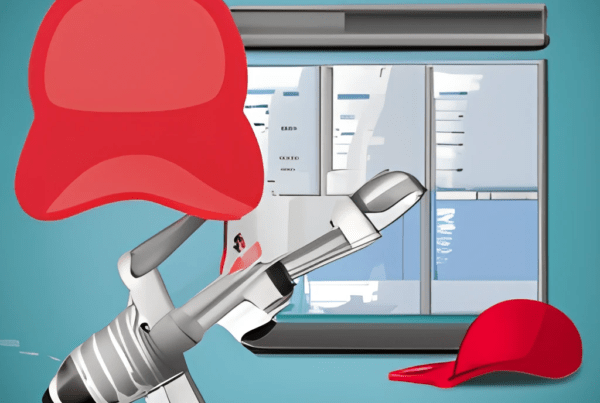 Patient recruitment remains one of the most challenging aspects of running a clinical trial, and the primary reason a trial is extended or delayed. The issue is pervasive with an estimated 86% of trials failing to meet recruitment goals by the intended timeline. Furthermore, it is estimated that the opportunity cost is $8 million for each day a drug is delayed on market. These sobering statistics are cause for concern for pharmaceutical companies, CROs and clinical trial sites alike.
Patient recruitment remains one of the most challenging aspects of running a clinical trial, and the primary reason a trial is extended or delayed. The issue is pervasive with an estimated 86% of trials failing to meet recruitment goals by the intended timeline. Furthermore, it is estimated that the opportunity cost is $8 million for each day a drug is delayed on market. These sobering statistics are cause for concern for pharmaceutical companies, CROs and clinical trial sites alike.
Public attitudes about clinical trials lead us to believe that increased participation in trials is possible. For example, 86% of survey respondents agreed that clinical trials are important to the advancement of treatment for diseases (Williams, 2004). Furthermore, 38% of adults would be interested in participating in a trial with some reservations (Williams, 2004), but currently less than 5% of adults with cancer are actually enrolled in trials. This disconnect between public opinion underscores the complex process from which a patient may cognitively believe they would participate in a trial, to the real-life behavior of participation. In other words, there are many opportunities for even eager potential participants to fall out of the pipeline long before the randomization visit.
In order to address the industry-wide problem, we must first look at the barriers and facilitators that facilitate patient recruitment then apply what we know to our everyday practice.
Facilitators to patient recruitment
So what does motivate a patient to participate in a trial? Anecdotal evidence suggests that motivations may include altruism, monetary compensation, a good experience in a previous trial, patient not experiencing benefit with current therapies, or higher level of care patients receive in a trial. Recent literature elucidates motivations for clinical trial participation even further.
In a pilot study conducted in Brazil, the primary motives were for personal benefit (therapeutic alternative, monetary compensation). Altruism or benefit to others was not seen as a significant motivator, and when they was present they were only a secondary motivator (Nappo, Lafrate, Sanchez, 2013). These motivators are difficult to operationalize as we are strictly bound by IRB limitations on the coerciveness of the monetary compensation we allow for, and we cannot claim any benefit to the patient due to the clinical trial.
The motivation to “collaborate with science,” an altruistic facilitator, was seen as a primary motivator significantly correlated with people over the age of 60, while those under 25 saw a significant correlation for the motivation of monetary compensation (Costas, Bayas, Serraon, LaFuente, & Munoz, 2012). Altruism can certainly be operationalized as a facilitator through advertisements and marketing. This can especially be used to attract patients in the 60 and over demographic as it is demonstrated that this is a primary motivator for them.
Barriers to patient recruitment
Barriers to participation are well-documented in the literature. Lack of awareness is agreed upon in the literature to be a barrier to participation, although awareness of clinical trials increases with the level of household income (Williams, 2004). In fact, in a 1997 survey 85% of cancer patients were not aware of clinical trials, but 75% would be willing to participate if they had known of one (Williams, 2004). This lack of awareness is largely constrained by the budgets that are set aside for patient recruitment. Although budgets are slowly increasing as the realization sets in that delays in patient recruitment are costly in the long run, we still have a long way to go to increase the public awareness of clinical trials in general.
According to a study conducted in the UK, subjects’ disease progression was a factor; the less symptomatic patients were more likely to participate. Age played a factor in the same study; parents of children were reluctant to consent for their child, and elderly patients were reluctant to participate due to family opinions. Level of education, language and cultural issues were also identified as barriers (Sullivan, 2004). These are factors that are less actionable than a simple lack of awareness. We can be attuned the cultural competency required to enroll minority populations, though, and family opinions can be swayed with the use of informative literature that patients can take home.
Fear of being a guinea pig and fear of the unknown are also cited as major barriers to patient recruitment. Logistical concerns such as work obligations and the perception that the risks outweigh the benefits are also concerns (Williams, 2004). As clinical trials become increasingly complex, difficulty in qualifying for a trial is also emerging as a significant barrier.
Conclusion
Some of the barriers to patient recruitment are not likely to dissipate in the coming years. As an industry, we must identify the barriers that are under our control and mitigate these concerns as often and as much as possible.
For instance, awareness of clinical trials continues to be a major barrier to participation. With the advent of social media and with more patients turning to the internet for health information, we can use these relatively cost-effective tools to spread the word. We must also be cognizant of the age group to which we are marketing the trials as evidenced by the recent findings in the literature.
Patient recruitment woes are not going away but we can use what we know to turn the tables in favor of increased participation.
These articles may be of interest to you:
How to Build Your Database for Patient Recruitment
3 Ways to Increase Patient Retention in Clinical Trials
Market Your Core Indications for Optimal Patient Recruitment
References
Costas, L., Bayas, J., Serrano, B., Lafuente, S., & Muñoz, M. (2012). Motivations for participating in a clinical trial on an avian influenza vaccine. Trials, 28-28.
Nappo, S., Iafrate, G., & Sanchez, Z. (2013). Motives for participating in a clinical research trial: A pilot study in Brazil. BMC Public Health, 19-19.
Sullivan, J. (2004). Subject Recruitment and Retention: Barriers to Success. Retrieved December 27, 2015, from http://www.appliedclinicaltrialsonline.com/subject-recruitment-and-retention-barriers-success
What is a Clinical Trial (What is a Clinical Trial)
https://www.childrensoncologygroup.org/index.php/what-is-a-clinical-trial
Williams, S. (2004). Clinical Trials Recruitment and Enrollment: Attitudes, Barriers, and Motivating Factors. Retrieved December 27, 2015, from http://cro.rbhs.rutgers.edu/documents/clinical_trials_recruitment_and_enrollment.pdf
—
Want to learn more? Join the Patient Recruitment and Retention (PR+R) Group on LinkedIn!
Get a free project plan for Mosio’s patient engagement solutions.







